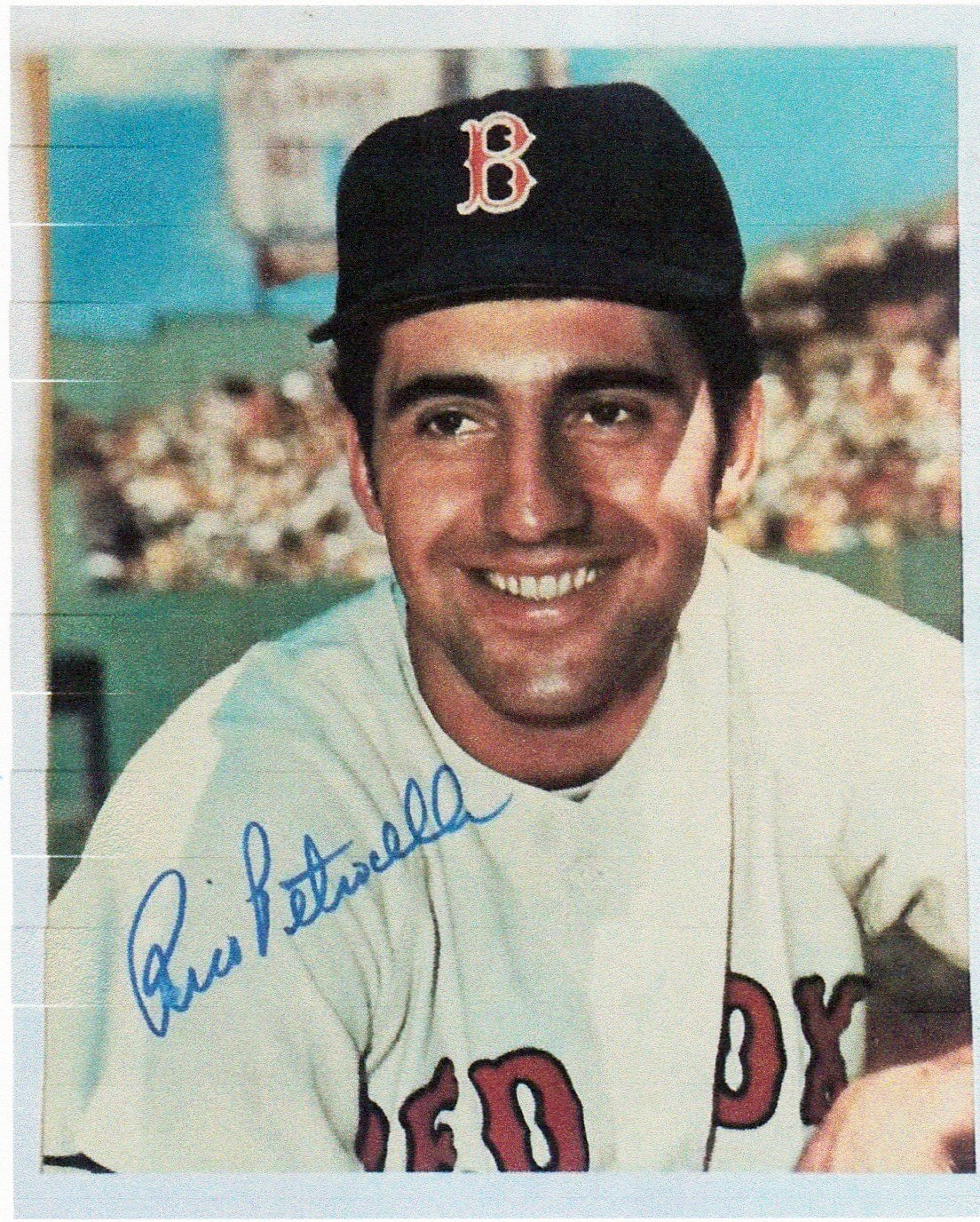One Saturday during the summer decades ago, I played third base in a Brooklyn baseball League. The other team on that day had a shortstop who spent the entire day whizzing line drives past my ear. He was the finest hitter I had ever encountered at that level. His name was Petrocelli and he was from the Sheepshead Bay section of the borough. Americo Peter Petrocelli was born on June 27, 1943, the youngest of seven children born to Attilio and Louise Petrocelli. As second generation Italians, the Petrocelli’s were free of the opposition to their sons playing games instead of going to work.
Attilio and his cousins ran a shop that specialized in sharpening tools for the garment district. While at Sheepshead Bay High School, Attilio recognized his son’s desire for a baseball career and allowed him to concentrate on it, unlike his four brothers who were expected to work to support the family. In that era, Emmons Avenue in Sheepshead Bay had the look and feel of a tiny fishing village. Boats left the wharfs at sunup and returned late in the afternoon laden with fresh catches.
The Avenue was lined with restaurants serving some of the best seafood in Brooklyn. Lundy Brothers was perhaps the most notable from 1920 to 1979, but there was also Joe’s Clam Bar and Randazzo’s, both of which were landmark eateries for decades. Rico shone as an All-Scholastic athlete in baseball and basketball at Sheepshead Bay High, even though high school was not the best breeding grounds for baseball in those days, when considering the short and cold high school season in New York City. It was on the sandlots that young players like Rico made their mark and he played with one of the most highly regarded local organizations, the Brooklyn Cadets. The manager of the club was Jim McElroy, who was one of the first to recognize Petrocelli’s latent talent.
“He was the most powerful for his size that I ever saw,” McElroy said of the fledgling youth. On the Cadets, Rico was teammates with Matt Galante and Joe Torre. Rico pitched and played in the outfield with his high school team and in a game against Brooklyn Tech, he pitched and won 1-0, defeating another top local prospect, Andy Rubilotta, who was to be signed by the White Sox. Petrocelli drove in the only run with a base hit. The Yankees had their eyes on Rico, but it was a Boston Red Sox scout, Bots Nikola, who searched the local sandlots for talent who ultimately signed Petrocelli. Nikola also inked Ted Schreiber off the local sandlot, as well as a couple of Long Island boys, Chuck Schilling and Carl Yastrzemski.
His professional career began in 1962 with Winston-Salem in Class B ball and hitting .277, with 17 home runs and 80 RBIs in 137 games. He spent three seasons in the minor leagues, although he did have four major league at-bats in ’63. When he came to Boston in 1965, he stayed for good. The atmosphere on the Red Sox under manager Billy Herman was considered a “country club” and Rico had a run-in with his manager about how he was doing things. “Being Italian,” Rico said, “I had a temper when I was younger and we had it out in the dugout one day.”
In 1966, Dick Williams replaced Herman as manager and Rico, now the regular shortstop, was solidifying the position he would hold until 1971. That year, he shifted to third base to make room for Luis Aparicio, the future Hall of Famer that the Red Sox acquired in a trade. Although a pull hitter on the sandlots, Rico hit often to the right side in the minors. Seeing his raw power, the Boston organization wanted him to take advantage of the “Green Monster” in left field at Fenway Park. He did and hit 201 home runs while driving in 773 during his twelve years with Boston. Rico felt that his average suffered by concentrating on trying to go for the long ball. His lifetime batting average was .251.
In 1969, he set a new American League record for shortstops when he hit forty home runs. He also drove in 97 and had a career high batting average of .297. Twice an All-Star (’67 and ’69), Petrocelli could look back on a difficult season in the minors. In 1964, playing for Seattle in the Pacific Coast league, Rico hit only .231 with ten homers and 48 RBIs in 134 games. For the first time in his brief pro career, he failed to make the All-Star team. But the Red Sox, coming off bad seasons were interested in rushing their good young prospects, Rico being one of them, to the majors as soon as possible. “Looking back,” Petrocelli said, “I probably could have benefited from spending a couple of more years in the minors. I really finished my development in the big leagues.”
It was in 1967 that the baseball dreams of the Boston Red Sox came to fruition, at least in part. The team won the American League Pennant on the final day of the season, beating the Minnesota Twins 5-3. The final out, a pop-up to Petrocelli remains a definitive moment in Red Sox history. It was Boston’s first pennant in 21 years. They had gone from ninth place to a pennant in one year and the season came to be known in Boston as “The Impossible Dream” year. Facing a well-rested St. Louis Cardinals team and a devastating pitching machine named Bob Gibson, Boston lost the World Series in seven games. At Fenway Park in game six, Rico hit a second inning home run off Dick Hughes. In the fourth inning off Rico and Reggie Smith hit back-to-back home runs off Hughes. During the same at bat, Yastrzemski belted one over the fence and for the first time in World Series history, a team hit three homers in one inning.
This same year, Rico and his wife Elsie also struck gold with the birth of twin boys, Jimmy and Billy. The couple had two more sons, Michael and Danny. After retiring as a player, Petrocelli decided to try his hand at managing and took over the single A Appleton, a Wisconsin club and Birmingham in AA ball, both for the Chicago White Sox organization. In 1992, he took the Pawtucket Red Sox to the AAA International League play-offs. In 1997, Rico was inducted into the Boston Red Sox Hall Of Fame.
Excerpted from “Caesars of the Diamond” by Andrew Paul Mele





